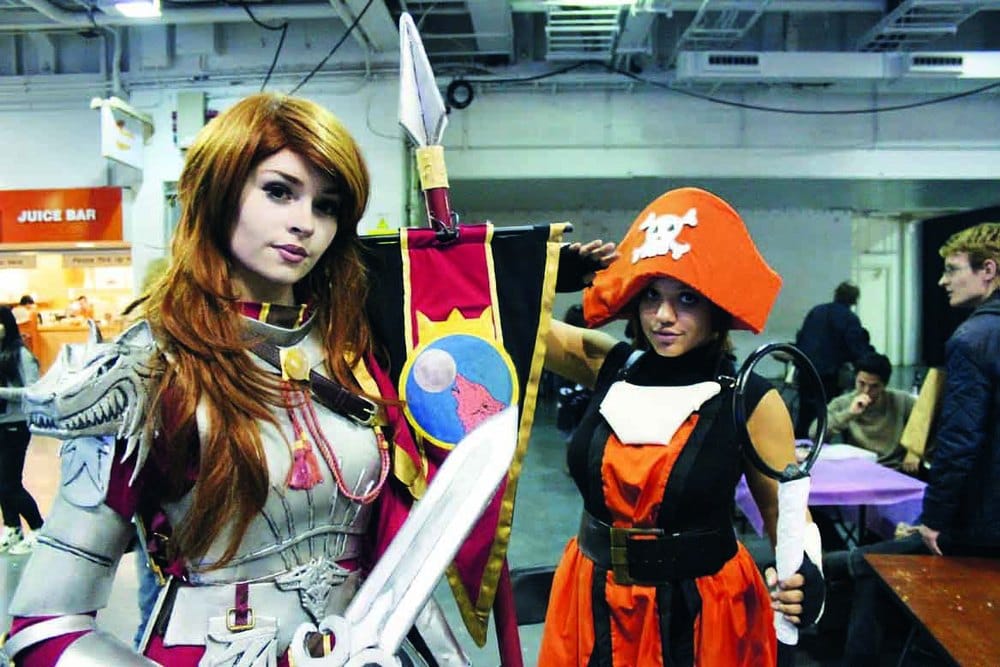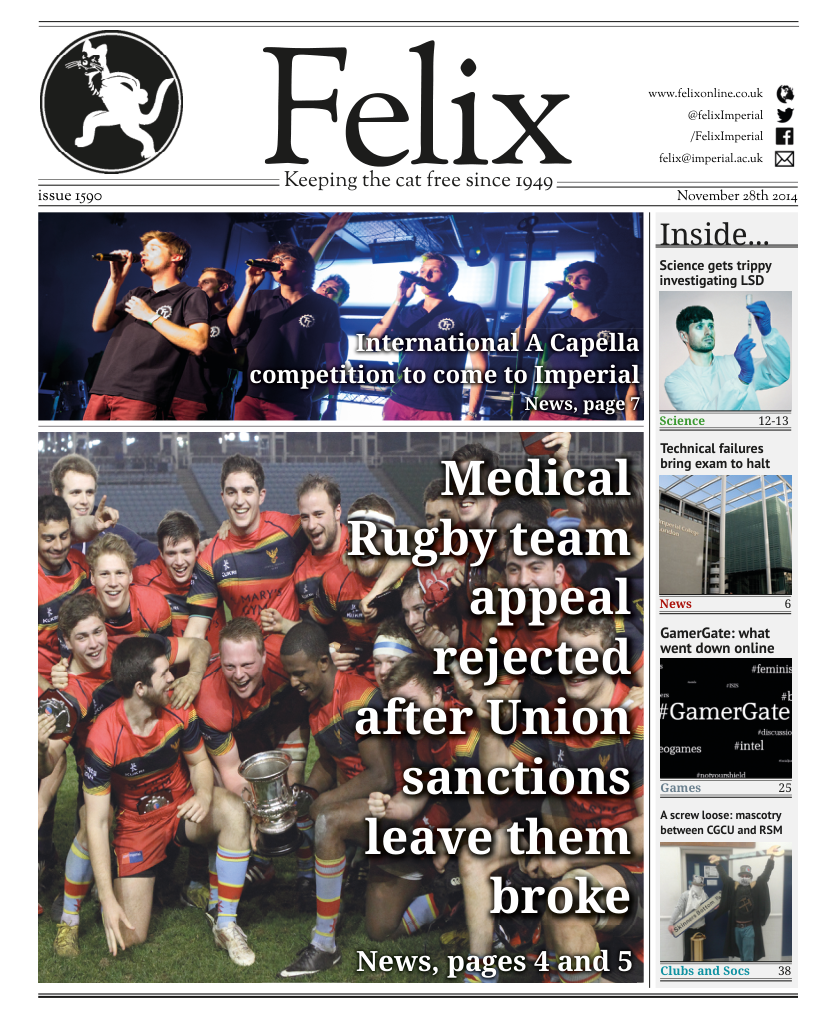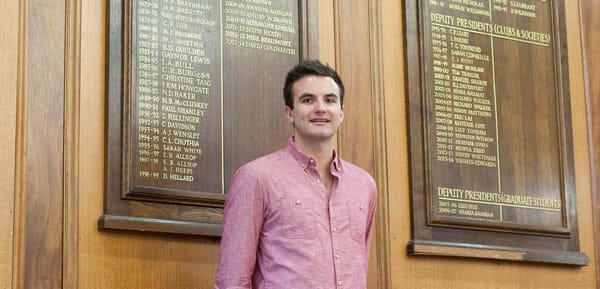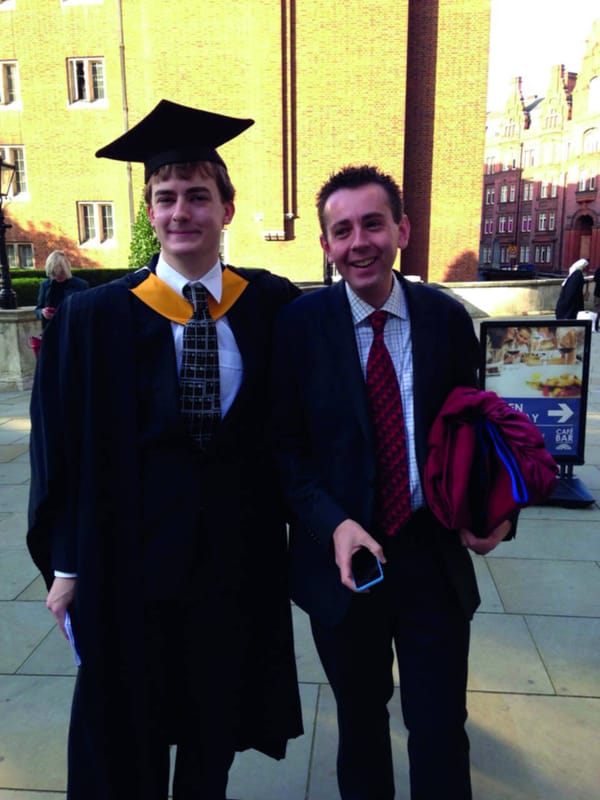Let's go hyper
Xuan Chen visits HYPER JAPAN and meets some of the stars behind the convention

The biannual gathering of dedicated Japanese markets and exhibitors took place two weekends ago, and managed an exhibition which was a verifiable smorgasbord of Japanese culture.
Exhibitions like these are a clarion call for like-minded small and medium business owners to come together in one place to show themselves to curious wanderers. The self-styled HYPER JAPAN Christmas Market succeeds brilliantly in creating a thematic atmosphere, presenting not just the Japanese products, but stages and performance areas which emblazon every single aspect of Japanese culture, from idiosyncratic fusion bands to traditional Japanese tea ceremonies and dance theatre. HYPER JAPAN boldly claims that it is the best depiction of Japanese culture outside of Japan, and as an outsider to the event whilst knowing a fair amount about the country, I am utterly bought by their claim
The event takes place in Olympia National, near Hammersmith and West Kensington. The bottom floor has an array of delicious smelling food stalls, all selling Japanese dishes and slightly bigger businesses along with a huge stage at one end, whilst the top floor seemed to be reserved for independent shop-owners and a smaller display area where martial arts and other demonstrations were carried out.
From any point in the exhibition hall, whatever was coming from the speakers beside the stage could be heard, and the stage could be seen from any point on the top floor, which mean that you never missed a thing – and never had to push your way through crowds or fight for seats to see what was going on. Between performances, J-POP (Japanese pop music) greatly enhanced the ambience of the whole event.
Cosplay, or dressing up as fictional characters found in anime, manga, video games, films, etc is a noticeable theme in the convention. Contests were on for the best costumes but I only recognised Hatsune Miku, a “humanoid persona voiced by a singing synthesizer application” after watching a quasi-3D performance in a side room of her songs. Sounds pretty weird to someone passing by, but I greatly admire the Japanese creative spirit and Hatsune Miku has turned out to be a massive marketing success for the company behind her.
Although cosplay is one of the loci of the event as one of the pillars of modern Japanese culture, it is not by far the main one. In fact, one of the major successes of the convention overall was the fact that there wasn’t a single, individual focus; rather, a smooth amalgamation of all aspects of Japanese culture presented in tandem which are consciously recognisable but simply flow together and feel natural.
On the upper floor, there are a group of retro arcade machines and Japanese video game consoles, including a Dance Dance Revolution on which I witnessed meteoric competition which redefined my definition of “pro gamer”.
In contrast, downstairs belonged to big Japanese video game developers such as Square Enix and Capcom which promoted their latest products and merchandise.
Soon the crowd was gathered around a sushi stand, and I managed to find myself witnessing a tuna cutting display. The show culminated with the tuna mercilessly dichotomised by a five-foot long sword. I can testify that this smooth-filleted tuna beats John West with regards to taste and texture by formerly unimaginable amounts.
By far the most enjoyable was the sampling of all the sake, whisky, and umeshu alcohols for sale. The exhibitors were generous with their samples and light-headed gratification led me to purchase a bottle of Choya Umeshu, a delicious citrus-smelling and flavour wine. Ume is a sweet Asiatic fruit which is described as somewhere between an apricot and a plum.
The stage is full with back-to-back displays of sake mixing, technodelic performances, karaoke, and an incredibly diverse, ballpark outline of every imaginable and unimaginable aspect of Japanese culture. However, one performer’s story stood out as particularly galvanising. I snuck backstage to get a cheeky interview in after the performance had ended.
Her name is Diana Garnett, an American singer who shot to fame last year by winning Song for Japan, described as the Japanese equivalent to The Voice, Britain’s Got Talent, and the X-Factor all rolled into one.
“I’ve wanted to become a singer in Japan since I was seven,” Diana tells me. “My dad watched a lot of anime so I had exposure to Japanese music and I wanted to be a performer before I’d figured out all the details, like how far Japan is from Washington DC.” Her bubbly personality and cheerful demeanour brings smiles to the English audience.
Chasing your dream through twenty years of hard work and perseverance paints a clear image of the undeterrable heart beneath the easy smiles. Diana first moved to Japan at the age of sixteen, a daunting prospect enough for anyone wishing to move to a country with 0.07% native English speakers. On her third and most recent visit to Japan, Diana also became an English teacher, instructing schoolchildren around middle school age. I asked her about the motivation behind her singing – a fervent and passionate intensity which can be felt during her renditions.
“As a schoolteacher, I often get kids coming up to me when they’re young with their dreams of becoming Pokémon masters, superheroes, and famous ice skaters along with all sorts of wonderful things. But then they grow up and settle into their perceived reality of just being able to live as an office worker somewhere. It’s heart-breaking. I sing for my fans and anyone who happens to be listening, in the hopes that they’ll be brave enough to follow their heart once again.”
Fundamental differences in the construction of sentences, such as omission of articles and subjects, all contribute to the difficulty of learning English as a native Japanese speaker. Diana’s songs are all in Japanese only; is the language barrier a problem this way?
“The focus of the songs is not the language, but the sound and music,” Diana tells me. Japanese is naturally a very lyrical and expressive language due to its liquid consonants and this makes it still remarkably communicative even to a non-speaker like me. As a musician myself, Diana and I concur by bringing up the indisputable fact that music is the true universal language of expression.
The realisation of a dream may not necessarily come as a single, cathartic, watershed moment. Diana continues to work on her music and she starts by collaborating with Joe Inoue, announcing their work on December 1st. Joe is an American-born Japanese pop artist whose gained prominence through his song ‘Closer’ being used for the opening song of the anime series Naruto. Joe is well-known for playing all the instruments in the backing track when he records a new song – in fact, his Facebook page description includes the line “Plays all instruments.” I manage to get a few words with him too, after he agreed to marry a fan in the audience. It remains to be seen if he is as true to his word as he is dedicated to the red bean ice cream he claims he loves – “it’s delicious and healthy,” he claims, right before Diana quips back “it’s not healthy, it’s ice cream.”
Joe was born to Japanese immigrants in California, and learnt Japanese from reading manga and watching anime, despite growing up in Los Angeles. “I had to teach myself,” he tells me, “but the comics are definitely the number one Japanese textbook.” As well as playing all the instruments in all of his songs and composing all of them himself, almost all of his song lyrics are in Japanese too. It’s Joe’s first time in Europe and he expresses confusion at the reason why the audience weren’t receptive to his American-style jokes about boobs and such on stage. I tell him that they’re just being polite.
HYPER JAPAN showcased a strikingly extraordinary cultural event, with a very strong inspirational aftertaste. The message is clear. Pursue your dream, and you’ll end up living it.









